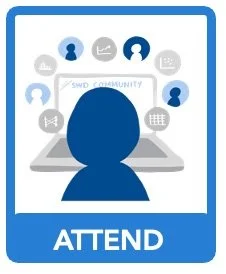WEEK 3: audience & message
We take a step back from graphs this week to assess the situation in which we are communicating. Specifically: who is our audience, and what do we need them to do? Through our lecture on Monday, June 17 at 11AM ET and assignments, we’ll learn about and practice identifying a specific audience, understanding their needs, and thoughtfully crafting our message.
You can watch the audience and message lecture recording below:
OFFICE HOURS
We’ll have two sessions of office hours this week. These are optional sessions that you can join to ask questions or chat. Alternatively, if you aren’t able to attend a session this week you can submit a question here.
Meet with Simon on Thursday, June 20 at 6AM ET: register to attend
Meet with Amy on Friday, June 21 at 1PM ET: register to attend
Learning resources for this week
The following materials will reinforce and expand upon the lessons covered in this week’s lecture. They've been grouped into those that are required learning materials to tackle before lecture, some additional resources should you wish to explore topics to further embed your learning following lecture, and a synthesizing activity where you’ll have a chance to apply this week’s learnings to your final course project.
Review before lecture
choose a format that will help you learn best—select at least one from the section below
READ | storytelling with you chapters 1 & 2
consider your audience & craft your message (pages 3–43)
Before you spend time creating content, there’s high utility in first pausing to answer some basic questions: who is your audience, and what action should they take? See lessons about audience and the Big Idea introduced in this week’s lecture explored through example.
LISTEN | SWD podcast episode 37: it’s for THEM
listening time 1:08:35
Tune in for a deep dive on audience: ways to identify who they are and prioritize their needs, strategies for approaching the challenging but common case of the mixed audience, and tips for getting to know an unfamiliar audience.
WATCH | audience matters!
viewing time 54:46
Your audience plays a critical role in how you choose to visualize and talk through your data. This video illustrates how the same numbers can be shown differently depending on who you communicate to.
Recommended resources
following lecture dive deeper into topics of your choosing
READ | stop, collaborate & listen (to your audience)
Before you spend time creating content, there’s high utility in first pausing to answer some basic questions: who is your audience, and what action should they take? See lessons about audience and the Big Idea introduced in this week’s lecture explored through example.
LISTEN | SWD podcast episode 19: ask smart questions
listening time: 39:23 (transcript)
Tune in for content that extends beyond the scope of this week’s theme into questions to ask as you explore and explain data that may be helpful for your course project (and in general!).
WATCH | from model output to data-driven deliverable
viewing time 42:17
See technical output transformed into a communication that works for a general audience through asking questions, offering feedback, and redesigning with a clear message in mind.
PRACTICE | SWD community exercise: clarify, critique & improve
Get some practice identifying the who, what, and how in a provided scenario, then make assumptions to redesign a visual to improve its effectiveness for driving action. Complete this exercise before viewing the video in your next assignment. After submitting your solution, browse others’ to compare and contrast, furthering your learning.
Synthesize activity
required for certificate of completion
SYNTHESIZE | apply this week’s learnings
Complete the Big Idea for your course project exercise (only visible to course participants). NOTE: we will use the Big Idea for your course project during class on Monday, June 24, so plan to complete this beforehand and have it handy for lecture!
Great work! Pausing to carefully consider your audience and craft your message helps ensure you create content—including data visualizations—that gets your message across clearly and resonates with your audience.
Next week… We’ll continue to explore the important planning phase for communicating with data and introduce a majorly useful low-tech technique to frame your content: storyboarding. Get your sticky notes ready. See you then!








